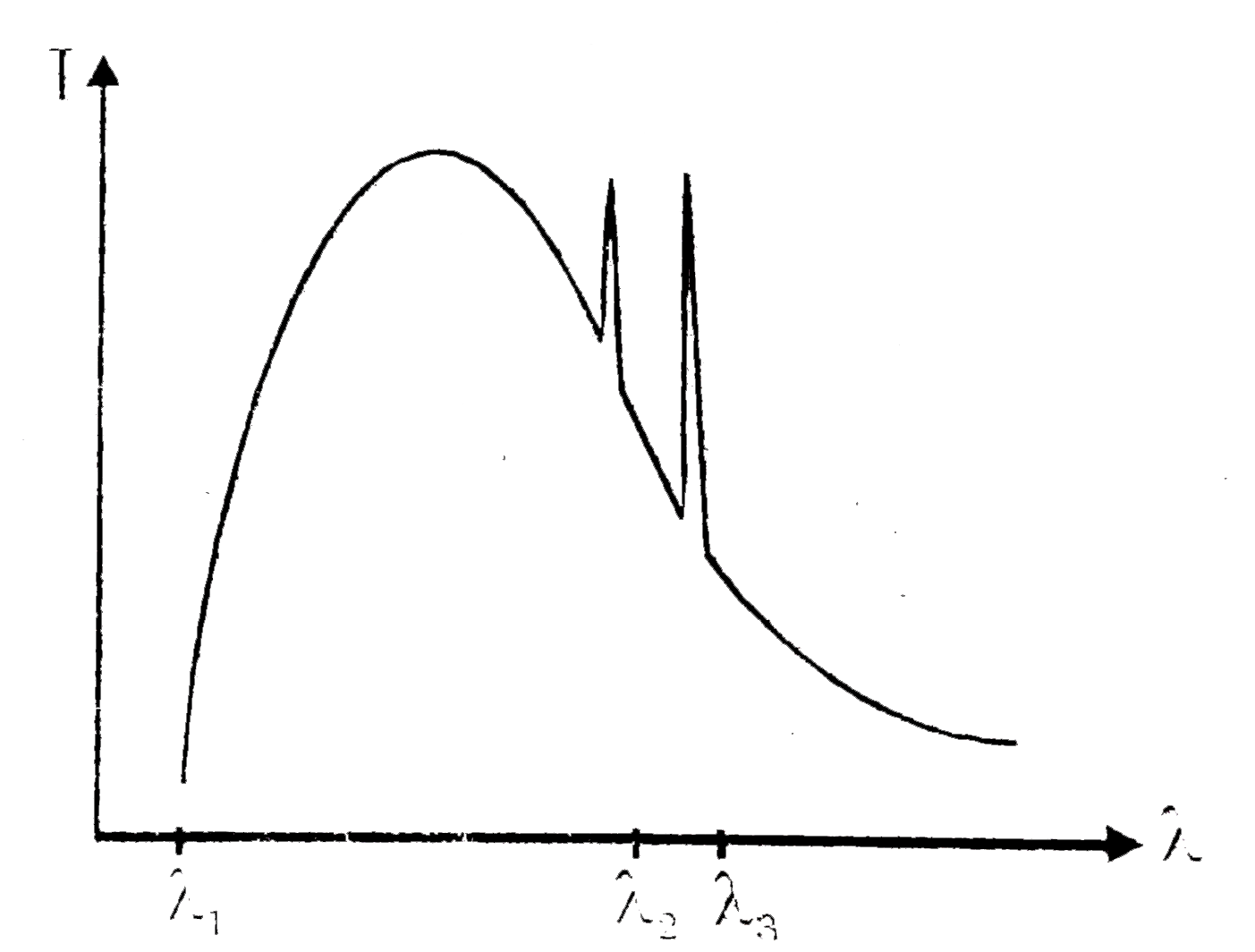Find the cut off walelength for the continuous X - rays coming
form an X-ray tube operating at 40 kv.
The correct Answer is:A, C
To find the cut-off wavelength for the continuous X-rays coming from an X-ray tube operating at 40 kV, we can follow these steps:
Step 1: Understand the relationship between energy and wavelength
The energy (E) of a photon is related to its wavelength (λ) by the equation:
E=hcλ
where:
- h is Planck's constant (6.626×10−34Js),
- c is the speed of light (3×108m/s),
- λ is the wavelength in meters.
Step 2: Convert the operating voltage to energy
The energy of the electrons accelerated through a potential difference (V) is given by:
E=eV
where:
- e is the charge of an electron (1.6×10−19C),
- V is the voltage in volts.
For a tube operating at 40 kV:
E=1.6×10−19C×40×103V=6.4×10−15J
Step 3: Convert energy from joules to electron volts
To convert joules to electron volts, we can use the conversion:
1eV=1.6×10−19J
Thus, the energy in electron volts is:
E=6.4×10−15J1.6×10−19J/eV=40eV
Step 4: Calculate the cut-off wavelength
Now, substituting the energy back into the wavelength equation:
λ=hcE
We can use hc≈1242eV⋅nm:
λ=1242eV⋅nm40eV=31.05nm
Final Answer
The cut-off wavelength for the continuous X-rays coming from an X-ray tube operating at 40 kV is approximately:
λ≈31.05nm
The energy (E) of a photon is related to its wavelength (λ) by the equation:
E=hcλ
where:
- h is Planck's constant (6.626×10−34Js),
- c is the speed of light (3×108m/s),
- λ is the wavelength in meters.
The energy of the electrons accelerated through a potential difference (V) is given by:
E=eV
where:
- e is the charge of an electron (1.6×10−19C),
- V is the voltage in volts.
E=1.6×10−19C×40×103V=6.4×10−15J
To convert joules to electron volts, we can use the conversion:
1eV=1.6×10−19J
Thus, the energy in electron volts is:
E=6.4×10−15J1.6×10−19J/eV=40eV
Now, substituting the energy back into the wavelength equation:
λ=hcE
We can use hc≈1242eV⋅nm:
λ=1242eV⋅nm40eV=31.05nm
The cut-off wavelength for the continuous X-rays coming from an X-ray tube operating at 40 kV is approximately:
λ≈31.05nm
Topper's Solved these Questions
- MODERN PHYSICS - 1BOOK - DC PANDEY ENGLISHCHAPTER - MODERN PHYSICS - 1EXERCISE - Example Type 1
2 Videos
- MODERN PHYSICS - 1BOOK - DC PANDEY ENGLISHCHAPTER - MODERN PHYSICS - 1EXERCISE - Example Type 2
6 Videos
- MODERN PHYSICSBOOK - DC PANDEY ENGLISHCHAPTER - MODERN PHYSICSEXERCISE - Integer Type Questions
17 Videos
- MODERN PHYSICS - 2BOOK - DC PANDEY ENGLISHCHAPTER - MODERN PHYSICS - 2EXERCISE - Level 2 Subjective
10 Videos
Similar Questions
Find the cut off wavelength for the continuous X - rays coming from an X-ray tube operating at 40 kV.
View SolutionFind the cutoff wavelength for the continuous X-rays coming form an X-ray tube operating at 30 kV.
View SolutionThe X-rays beam coming from an X-ray tube will be
View SolutionThe X- rays beam coming from an X- rays tube will be
View Solutionfind the minimum wavelength of the emitted X rays, when an X-ray tube is operated at 50 kV.
View SolutionFind the maximum frequency, the X-ray emitted by an X-ray tube operating at 30kV
View SolutionFind the maximum frequency, the X-ray emitted by an X-ray tube operating at 30kV
View SolutionWhen the voltage applied to an X-ray tube increased from V1=15.5kV to V2=31kV the wavelength interval between the Kα line and the cut-off wavelength of te continuous X-ray spectrum increases by a factor of 1.3. If te atomic number of the element of the target is z. Then the value of z13 will be: (take hc=1240eVnm and R=1×107m)
View SolutionIntensity of x-rays coming from an x-ray tube is plotted against wavelength as shown:-

View SolutionThe cut-off wavelength of an X-ray depends on
View Solution
